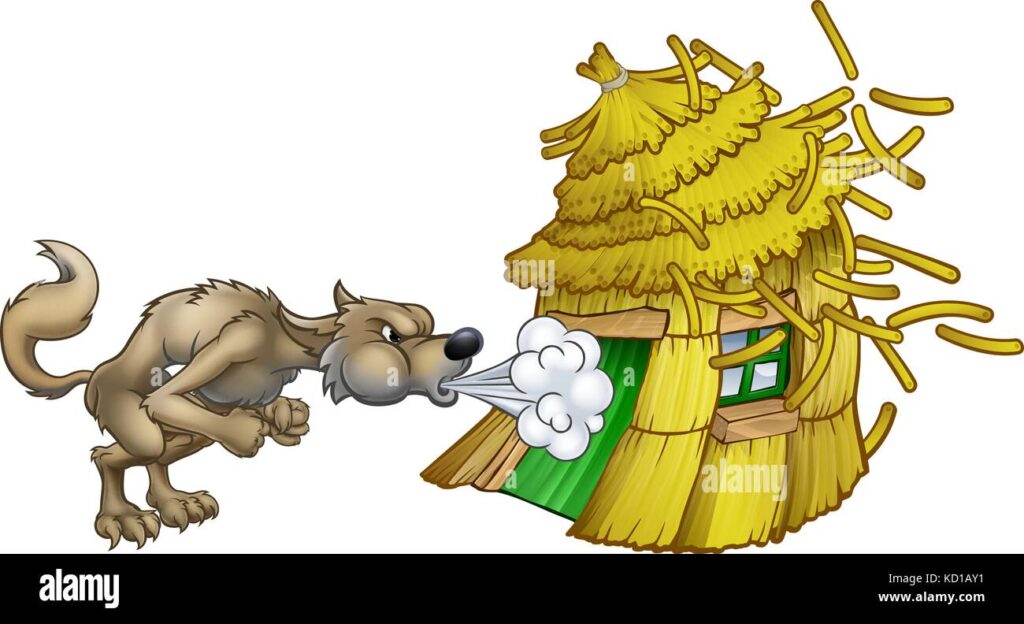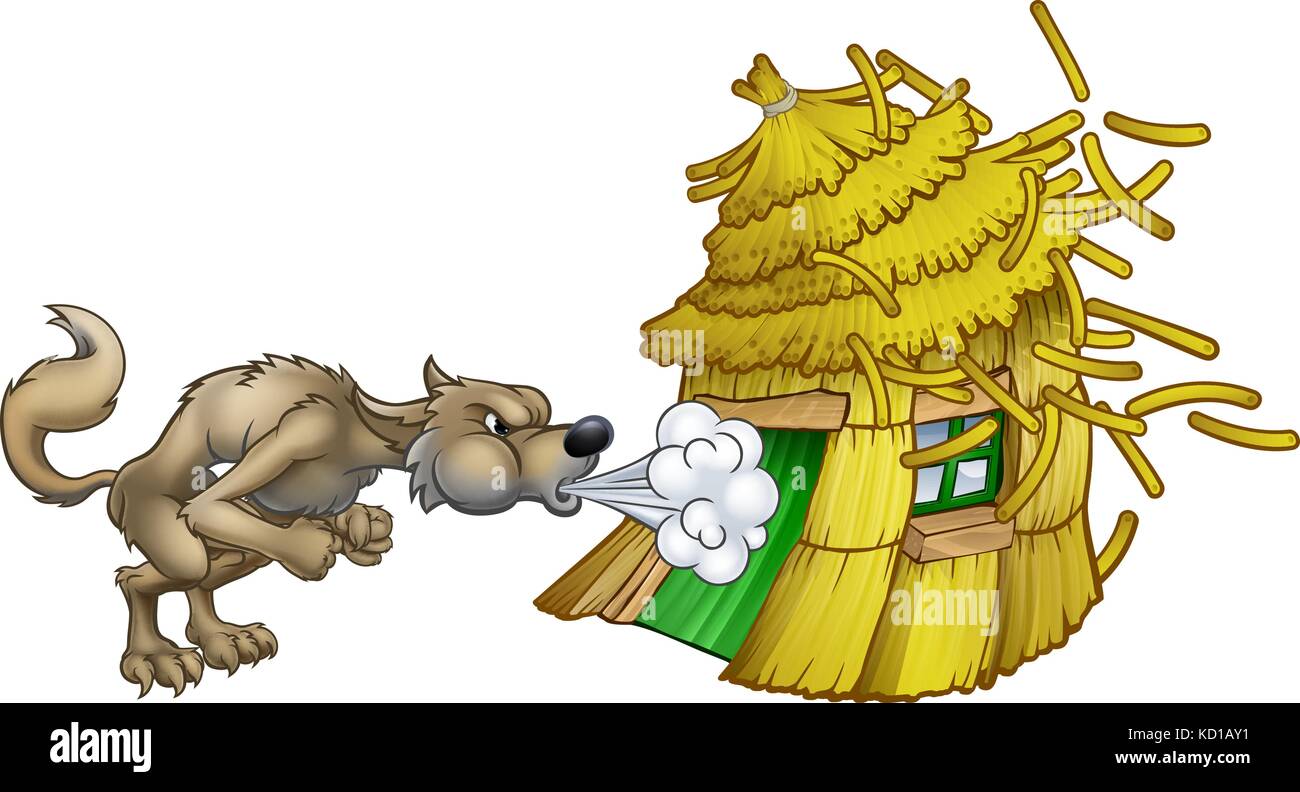
The Big Bad Wolf: Unpacking the Myth, the Legend, and the Reality
The phrase “big bad wolf” conjures immediate images: a menacing figure lurking in the shadows, a symbol of danger and deception, and a key player in some of childhood’s most enduring cautionary tales. From Little Red Riding Hood to The Three Little Pigs, the big bad wolf has permeated our collective consciousness, shaping our understanding of predators, both literal and metaphorical. But who is this wolf, really? What are the origins of his fearsome reputation, and how has he evolved across different cultures and interpretations? This article delves into the history, symbolism, and enduring appeal of the big bad wolf, separating fact from fiction and exploring his complex role in storytelling.
Origins and Evolution of the Big Bad Wolf
The big bad wolf isn’t a modern invention. His roots can be traced back to ancient folklore and oral traditions, long before the Brothers Grimm committed these stories to paper. The earliest iterations of these tales often featured generic forest predators, embodying the dangers lurking in the wilderness. Over time, these predators coalesced into the figure of the wolf, an animal already associated with cunning and ferocity in many cultures.
One of the earliest known versions of Little Red Riding Hood, for example, predates written records and was likely passed down through generations of storytellers. In these early versions, the wolf wasn’t always explicitly a wolf; sometimes, he was an ogre or another monstrous creature. However, the core elements remained consistent: a vulnerable young girl, a deceptive predator, and a lesson about the dangers of straying from the path and trusting strangers. The wolf’s ability to disguise himself and manipulate his victims cemented his status as a symbol of deceit.
The Grimm Brothers and the Big Bad Wolf
The Brothers Grimm played a pivotal role in popularizing the big bad wolf. Their version of Little Red Riding Hood, published in the 19th century, solidified the wolf’s image as a cunning and malevolent creature. Similarly, their adaptation of The Wolf and the Seven Young Goats further cemented the wolf’s role as a predator targeting the innocent. These stories, widely translated and disseminated, cemented the big bad wolf’s place in Western folklore.
In these tales, the wolf isn’t just a hungry animal; he’s a deliberate villain. He plans his attacks, uses disguises to deceive his victims, and revels in his power. This personification of the wolf transformed him from a simple predator into a symbol of evil, cunning, and the dangers of the unknown. The stories served as cautionary tales, warning children about the importance of obedience and the dangers of trusting strangers.
The Big Bad Wolf in Popular Culture
The big bad wolf’s influence extends far beyond traditional fairy tales. He’s appeared in countless books, movies, television shows, and even video games, often reimagined and reinterpreted for modern audiences. From comedic portrayals to darker, more menacing versions, the wolf continues to capture our imagination.
Disney’s Take on the Wolf
Disney’s animated adaptation of The Three Little Pigs is perhaps one of the most iconic depictions of the big bad wolf. In this version, the wolf is portrayed as a cartoonish villain, complete with exaggerated features and a penchant for huffing and puffing. While still a threat, this version of the wolf is ultimately comedic, providing a lighter and more entertaining take on the traditional tale. He is more buffoon than truly menacing, a figure of fun rather than genuine fear. [See also: The Enduring Power of Fairy Tales]
Modern Interpretations of the Wolf
More recent interpretations of the big bad wolf have explored the character’s complexity. Some stories delve into the wolf’s motivations, portraying him as a misunderstood creature driven by hunger or instinct rather than pure malice. Others explore the wolf’s perspective, offering a more sympathetic view of the predator’s struggle for survival. In some instances, the wolf is even portrayed as a victim of circumstance, forced into his role by societal pressures or external forces.
These modern interpretations often challenge the traditional black-and-white view of the wolf, prompting audiences to question their preconceived notions about good and evil. By exploring the wolf’s perspective, these stories encourage empathy and understanding, reminding us that even the most fearsome predators can be complex and multifaceted characters.
Symbolism of the Big Bad Wolf
Beyond his literal role as a predator, the big bad wolf carries significant symbolic weight. He represents a variety of concepts, including danger, temptation, and the untamed wilderness. His ability to disguise himself and deceive his victims also makes him a symbol of hypocrisy and hidden agendas.
The Wolf as a Symbol of Danger
At its most basic level, the big bad wolf represents danger. He embodies the threats lurking in the shadows, the unseen forces that can harm us if we’re not careful. This symbolism is particularly potent in stories aimed at children, where the wolf serves as a warning about the importance of caution and obedience. He is the embodiment of the unknown, the lurking threat that waits just beyond the safety of home.
The Wolf as a Symbol of Temptation
The wolf’s ability to disguise himself and manipulate his victims also makes him a symbol of temptation. He represents the allure of forbidden pleasures, the seductive forces that can lead us astray. In Little Red Riding Hood, for example, the wolf’s disguise allows him to tempt the young girl to deviate from her path, leading to her near-fatal encounter. [See also: The Psychology of Fear in Storytelling]
The Wolf as a Symbol of the Untamed Wilderness
The big bad wolf is also closely associated with the untamed wilderness. He represents the forces of nature, the raw and unpredictable elements that exist beyond the control of civilization. This symbolism is particularly relevant in stories where the wolf resides in the forest, a place often depicted as dangerous and mysterious. The wolf is the master of this domain, embodying its wildness and untamed nature.
The Big Bad Wolf: Fact vs. Fiction
While the big bad wolf is a powerful symbol in folklore, it’s important to separate fact from fiction. Real wolves are complex animals with their own social structures and behaviors. They are not inherently evil or malicious, and their actions are typically driven by survival instincts rather than a desire to cause harm.
The Reality of Wolves
Wolves are apex predators, meaning they play a crucial role in maintaining the balance of their ecosystems. They help control populations of herbivores, preventing overgrazing and promoting biodiversity. They are also highly intelligent and social animals, living in packs with complex hierarchies and communication systems. The depiction of the “big bad wolf” often ignores the vital ecological role that wolves play.
Dispelling the Myths
The negative portrayal of wolves in folklore has contributed to their persecution and endangerment in many parts of the world. By understanding the reality of wolves and dispelling the myths surrounding them, we can promote conservation efforts and foster a more balanced relationship with these fascinating animals. The term “big bad wolf” should be recognized as a fictional construct, not a reflection of actual wolf behavior.
The Enduring Appeal of the Big Bad Wolf
Despite his negative portrayal, the big bad wolf continues to fascinate and intrigue us. His enduring appeal lies in his complexity and his ability to embody a variety of themes and ideas. He is a symbol of danger, temptation, and the untamed wilderness, but he is also a reminder of the importance of caution, obedience, and the power of storytelling. The continued reimagining of the “big bad wolf” in various media speaks to the character’s lasting impact.
The big bad wolf serves as a cautionary figure, reminding us to be wary of appearances and to trust our instincts. He is a reminder that not everything is as it seems, and that danger can lurk in unexpected places. By confronting the big bad wolf in stories, we can learn valuable lessons about navigating the complexities of the world and protecting ourselves from harm. The “big bad wolf” has become a cultural touchstone, used to represent various threats and challenges.
Ultimately, the story of the big bad wolf is a story about survival. It’s a story about overcoming adversity, confronting our fears, and finding strength in the face of danger. Whether he’s portrayed as a menacing villain or a misunderstood creature, the big bad wolf remains a powerful and enduring symbol in our collective imagination. His continued presence in popular culture is a testament to his lasting impact and his ability to resonate with audiences across generations. The “big bad wolf” continues to evolve, reflecting changing societal values and concerns.
Conclusion
The big bad wolf is more than just a character in a fairy tale; he is a cultural icon, a symbol of danger, temptation, and the untamed wilderness. From his origins in ancient folklore to his modern interpretations in popular culture, the wolf has undergone countless transformations, reflecting our evolving understanding of predators, both literal and metaphorical. By unpacking the myth, the legend, and the reality of the big bad wolf, we can gain a deeper appreciation for his complex role in storytelling and his enduring power to capture our imagination. The “big bad wolf” will likely continue to haunt and fascinate us for generations to come.

